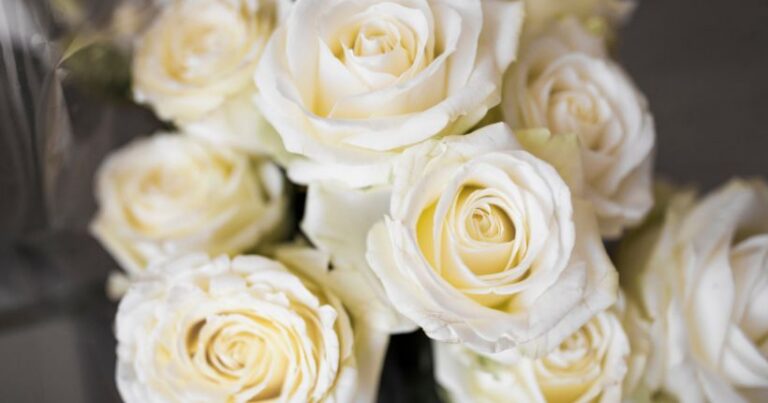White roses. Simple, right? Just petals and stems and that soft, snowy glow.
But here’s the thing, those petals carry stories. Of weddings and wakes. Of fresh starts and final goodbyes. They’re subtle, sure, but they say something.
So if you’re wondering what makes them so special, what gives them that quiet emotional power, let’s unpack the white roses’ meaning in full. Spoiler: it’s more than just pretty blooms. Where history, beauty, and emotion meet in bloom, tracing their symbolism, historical roots, and the thoughtful moments when they shine best.
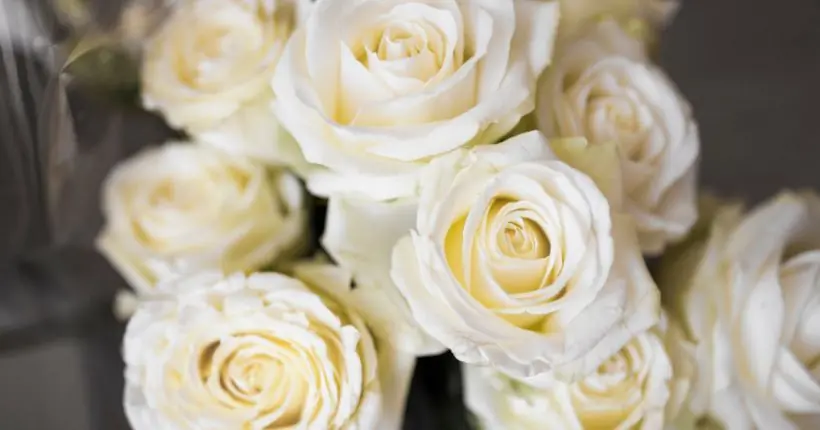
What Do White Roses Symbolize?
Let’s get something straight, white roses aren’t just elegant decorations. They’re emotion in bloom. They carry unspoken words, invisible gestures, and the kind of emotional nuance that can’t be captured in a text or Hallmark card.
Psychologically, we know that color influences emotion. And white? White is a universal cue for pause, purity, and presence. Studies show that people associate white flowers with sincerity and empathy, making them a go-to when we want to express something real, something raw, even.
So no, it’s not “just a rose.” Its memory, mood, and meaning are packed into a few petals.
Here’s what they stand for:
Purity and Innocence (Because sometimes softness is strength)
Perhaps the most widely recognized symbolism of white roses is purity. Their crisp, clean color evokes a sense of untouched beauty, making them the perfect floral metaphor for innocence and sincerity. This is why they’re commonly used in weddings, christenings, and other ceremonies that mark a fresh chapter in life. The untouched petals reflect a heart unmarked by hardship, a gentle beginning, a clean slate.
White roses also speak to moral integrity and honesty. When gifted, they may imply respect and admiration for someone’s character or spirit, rather than romantic love. That’s why they’re often chosen for people you deeply admire: mentors, family members, or dear friends.
New Beginnings (The quiet excitement of a fresh page)
Closely tied to purity is the idea of new beginnings. White roses are often chosen for engagements, baby showers, and housewarmings because they capture the feeling of starting anew. They’re not about loud declarations, they’re about quiet hope, thoughtful transition, and open doors to what lies ahead.
A bouquet of white roses during life’s transitional moments, such as moving to a new city, embarking on a new career, or even setting new personal goals, can be a powerful affirmation. They reflect hope, optimism, and calm reassurance when stepping into the unknown.
Sympathy and Remembrance (Saying what we can’t say out loud)
In times of grief, white roses speak the language of peace and respect. They are a staple at funerals and memorials, often paired with lilies or chrysanthemums. Their symbolism here shifts toward reverence, honoring a life lived, offering silent support, and expressing emotions that words can’t quite reach. The soft white petals become a way of saying goodbye with grace.
White roses are especially powerful in memorials because they manage to be both elegant and unobtrusive. They don’t demand attention, but they offer presence, an important distinction when trying to honor someone’s memory with dignity.
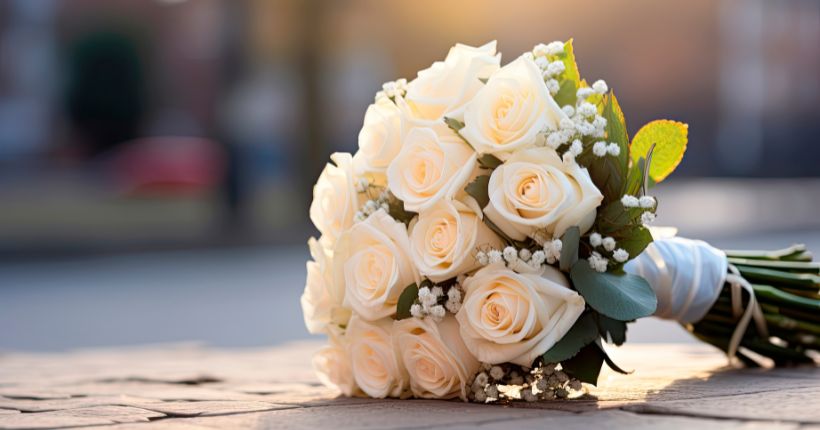
The History & Cultural Significance of White Roses
The white rose didn’t just appear in modern florists and bridal bouquets, it’s been revered and represented in culture, myth, and ceremony for centuries. Let’s trace its roots across time and tradition.
Ancient Myths & Religious Symbolism
Mythology is vast, and every culture has its own. Miraculously, white roses are respectfully portrayed in many corners of the world.
- Greek Mythology – Aphrodite’s Birth: According to Greek myth, Aphrodite, the goddess of love and beauty, emerged from the sea foam created when Cronus cast the severed genitals of Uranus into the ocean. As she rose from the sea, white roses sprang from the foam, symbolizing her divine beauty and purity.
- Christianity – The Virgin Mary: In Christian symbolism, white roses are associated with the Virgin Mary, representing her purity, innocence, and divine love. The rose’s delicate appearance reinforces themes of spiritual purity and grace.
- Islamic Tradition – Symbol of Virtue: In Islamic culture, the white rose is perceived as a symbol of virtue and purity. It is often used in religious and funeral ceremonies to represent the purity of the soul returning to its Creator.
- Sufi Mysticism – Divine Love: Within Sufism, a mystical branch of Islam, the rose symbolizes divine love and the soul’s yearning for union with the divine. The white rose, in particular, represents spiritual purity and the journey towards enlightenment.
- Celtic Mythology – Otherworldly Connection: In Celtic traditions, white roses are connected to the Otherworld and are thought to be gifts from the gods that could guide those who are lost or seeking spiritual enlightenment
These diverse myths and religious associations underscore the white rose’s enduring symbolism of purity, love, and spiritual connection across cultures.
Victorian Era Flower Language (White Roses’ Secret Messages)
The Victorian era saw the rise of floriography, the language of flowers. During this time, white roses were used to convey heartfelt emotions in a time when societal norms restricted open expression. A white rose might be sent to say, “I’m thinking of you with pure intentions,” or “My love is true and spiritual.” Their message was clear, even when voices remained silent.
White roses, in this sense, became a gentle but firm declaration of character and respect. While red roses might hint at seduction, white roses were reserved for the kind of love that is cherished and protected, rather than pursued. This gave them an air of quiet nobility.
White Roses in Eastern vs. Western Traditions
In Western cultures, white roses tend to symbolize beginnings, purity, and solemn respect. In Eastern cultures, however, the interpretation can differ. For instance, white flowers, including roses, are more strongly tied to mourning and memorial rituals in places like China and Japan. This contrast underscores the emotional versatility of white roses. They can be both a celebration and a goodbye, depending on the cultural lens.
Interestingly, in modern times, these meanings have begun to blur. White roses are increasingly being used for weddings in countries where they were once reserved strictly for mourning, showing how global floral language evolves with time and exposure.
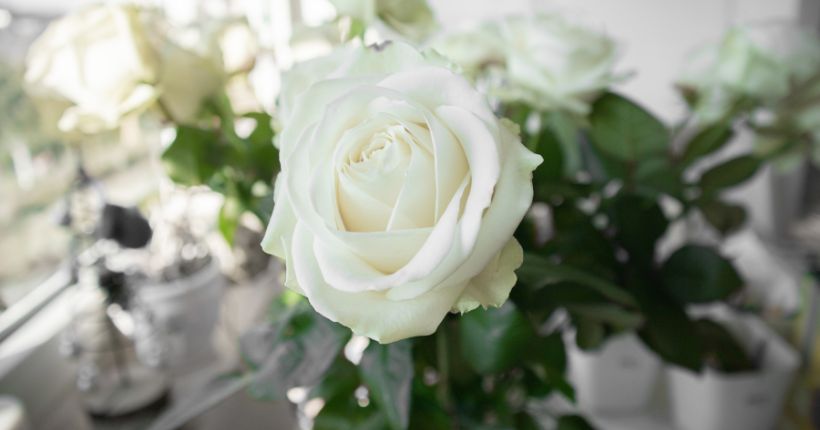
When to Gift White Roses? (Occasions & Etiquette)
Understanding the white roses meaning makes them an incredibly thoughtful choice for many occasions. But timing and context matter. Here’s when these pristine blooms are most meaningful:
Weddings and Anniversaries
A bridal bouquet of white roses is a classic symbol of everlasting love and fidelity. Their understated beauty enhances the romantic mood without overshadowing it. They’re also a beautiful anniversary gift, especially for milestone years, signifying enduring affection and partnership that has stood the test of time.
Don’t overlook vow renewals or civil ceremonies, white roses carry dignity and class for all types of partnerships. They also work beautifully in boutonnières and corsages, offering elegance without excess.
Funerals and Memorials
In moments of loss, white roses provide quiet comfort. They honor the deceased with dignity and offer solace to the grieving. When words falter, a white rose can say, “You are remembered.”
They are also often used in sympathy bouquets sent to the family’s home, especially when paired with softer blooms like pale blue hydrangeas or dusty miller. The color palette is soothing and respectful, offering more than condolences, it offers emotional presence.
Birthdays and Celebrations
White roses aren’t just for solemn or romantic moments. They’re perfect for birthdays, graduations, or even promotions, any celebration of a new chapter. They carry a message of respect and admiration, and unlike flashier blooms, they never feel out of place.
They’re also popular in arrangements for baby showers and gender-neutral gifting, especially when paired with cream peonies or eucalyptus. The vibe is clean, chic, and effortlessly celebratory.

White Roses in Literature, Art & Modern Culture
White roses have left their mark beyond bouquets. They’ve inspired poets, painters, and filmmakers, serving as metaphors for love, secrecy, and silent strength.
Famous Poems & Paintings Featuring White Roses
In literature, white roses often symbolize unspoken love or unattainable beauty. W.B. Yeats and Sylvia Plath both used white roses to evoke tenderness and melancholy. In art, painters like John William Waterhouse and Pierre-Joseph Redouté immortalized the bloom in lush oil and delicate watercolor, each petal rendered with reverence.
White roses also appear in royal iconography. The House of York famously used the white rose as a symbol during England’s War of the Roses, contrasting with the red rose of Lancaster. To this day, it remains a potent emblem of lineage and identity.
White Roses in Film & Media (Symbolic Appearances)
From the subtle inclusion of white roses in romantic dramas to their use in historical epics, white roses often appear in moments of truth and transformation. In “American Beauty,” the white rose is a contrasting symbol to the more dominant red, hinting at purity beneath chaos. In period dramas, a single white rose might signal restrained passion or honor.
TV shows like “Bridgerton” and “The Crown” have used white roses as visual cues in key scenes, moments of vulnerability, dignity, or transition. These flowers do more than decorate the set; they deepen the narrative.
The Rise of White Roses in Minimalist Aesthetics
In today’s world of clean lines and neutral palettes, white roses have become a darling of minimalist design. You’ll find them in editorial shoots, modern bridal arrangements, and high-end home décor. Their soft sophistication makes them the perfect touch of organic beauty in sleek spaces.
Interior designers often use white roses to soften modern spaces without interrupting the palette. A cluster in a marble vase or scattered petals in a flat lay photograph, white roses add emotional resonance to visual minimalism.
White Roses vs. Other Colors: How Do They Compare?
Sometimes, the best way to understand white roses meaning is to see how they stack up against their more colorful cousins.
White Roses vs. Red Roses (Love vs. Purity)
Red roses are bold, passionate, and intense, they scream romance. White roses are more subtle. They don’t shout, they whisper. They symbolize a quieter, more enduring kind of love: one rooted in trust, devotion, and mutual respect.
Think of red roses as the beginning of a love story, and white roses as the promise that love can grow into something deep and steady. They’re often paired together in mixed bouquets to balance heat with harmony.
White Roses vs. Pink Roses (Innocence vs. Gratitude)
While both white and pink roses lean into the softer emotional spectrum, their nuances matter. White roses express innocence and humility, while pink roses lean into appreciation and gentle admiration, like showing the endless love for the special woman in your life on Mother’s Day. Think of white as the beginning and pink as the celebration.
Pink roses are often chosen for mentors or friends, whereas white roses tend to be gifted during transitional or deeply symbolic life moments. The intent is more reflective.
White Roses vs. Ivory Roses (Subtle Differences)
At first glance, white and ivory roses might seem interchangeable, but their tones say different things. Ivory roses carry a touch of warmth and are often associated with charm and thoughtfulness, whereas white roses remain rooted in pure intentions and formality, like maybe showing appreciation for a mentor on Teacher’s Day. It’s a difference of mood as much as message.
Ivory roses are ideal for less formal occasions or where a touch of softness is needed without the gravitas that white roses carry. A blend of both can create a graceful, balanced look.
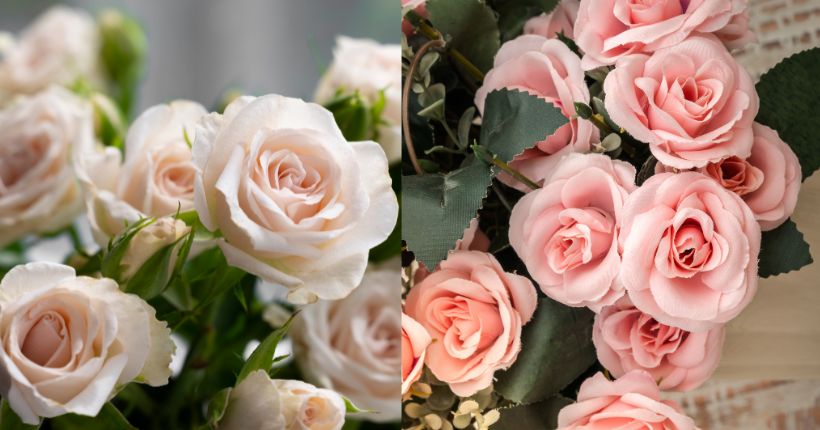
Conclusion
So, what’s the big deal about white roses? A lot, actually. In a world full of bold gestures and noisy declarations, white roses are the soft-spoken ones. They don’t demand the spotlight, they invite you into a quieter, more meaningful moment.
If you’ve been asking yourself about white roses’ meaning, here’s your answer in a nutshell: they’re symbols of fresh starts, deep respect, quiet love, and gentle goodbyes. They carry grace where words fail and offer stillness in chaos.
Whether you’re celebrating someone’s brightest day or showing up for their hardest one, white roses say the right thing without ever needing to speak.
Or, as Antoine de Saint-Exupéry wrote in The Little Prince:
“It is the time you have wasted on your rose that makes your rose so important.”
Maybe that’s why they linger in our memories, because when we give white roses, we’re really giving meaning.
Now that you know the meaning of white roses, dive deeper into the symbolism behind each color:
- Roses Meaning
- Red Roses Meaning
- Blue Roses Meaning
- Pink Roses Meaning
- Yellow Roses Meaning
- Purple Roses Meaning
- Orange Roses Meaning
- Black Roses Meaning
Each color tells a story, find the perfect one for your occasion.

